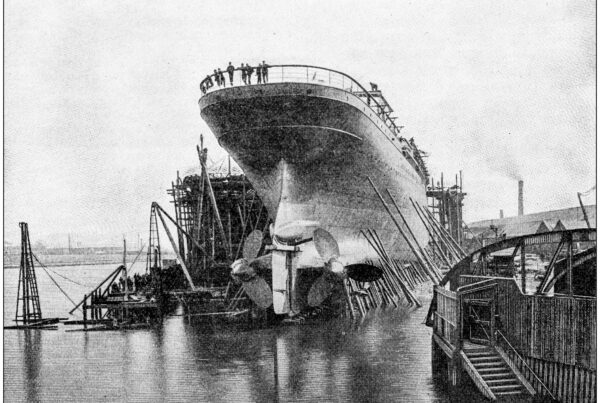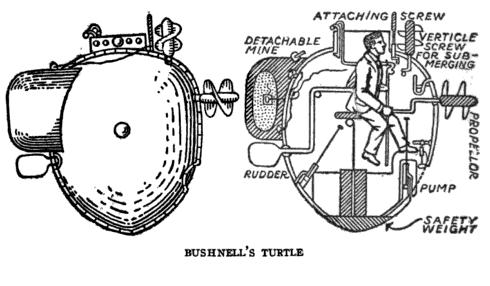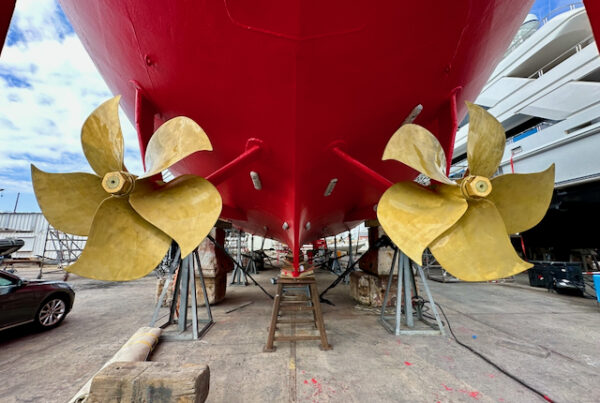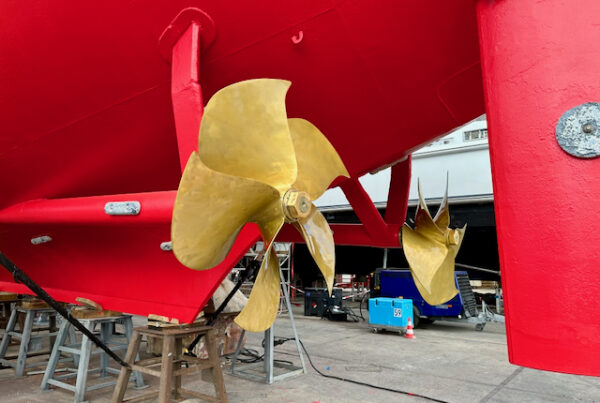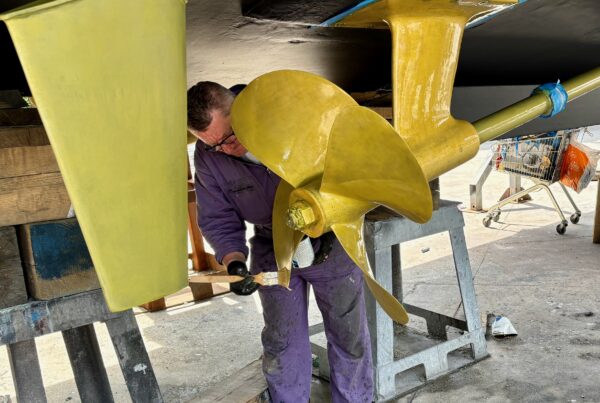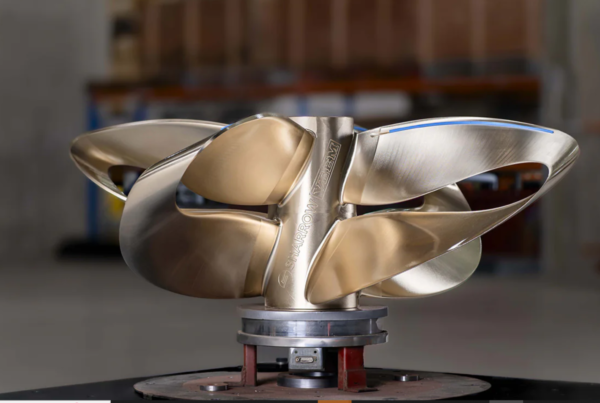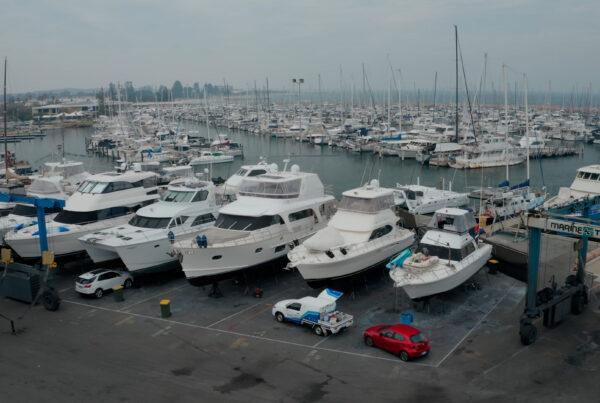In this fast-paced modern world, you might be forgiven for thinking that propellers could be made from a variety of new space-age materials. Yet despite the advancements in technology, bronze remains the go-to industry choice for prop material.
From yachts and leisure crafts to large ships, bronze propellers are widely utilised across the globe. Why are so many propellers still made from bronze, though, and what are the benefits of using the alloy? We thought we would take a closer look…
Types of bronze propeller
Bronze has been used for thousands of years, with the first signs of copper, tin and other metal alloy appearing around 3,500 BC. Consistently used throughout history for a wide range of applications, it was first utilised in a propeller in 1775, when inventor David Bushell and foundryman Isaac Doolittle created a thin-bladed propeller for their submarine, The Turtle.
If you remember your science lessons from school, you’ll likely recall that brass is an alloy of copper and zinc, while bronze is an alloy of copper and tin. However, when it comes to boats, things are not quite as straightforward as that and your ‘bronze’ propeller is likely made from copper alloyed with one or more of zinc, tin, aluminium, iron, manganese, nickel, phosphorous, silicon, lead, and arsenic.
These different blends are utilised for a range of reasons, such as ease of casting, improved strength, greater resistance to bending, increased surface hardness, durability, corrosion resistance and easy polishing and repair.
Historically, older propellers would either be made of Manganese Bronze (58% copper, 39% zinc, and around 1% manganese, iron and aluminium) or Admiralty bronze (72% copper, 1% tin and 27% zinc alongside traces of iron, lead and arsenic). Today, most leisure boat propellers are made from Nibral, a nickel aluminium bronze that is 80% copper, 10% aluminium, 5% nickel, 4% iron and 1% manganese.
Metal |
NIBRAL |
Manganese Bronze |
| Copper | 81% | 60% |
| Zinc | – | Remainder |
| Nickel | 5% | – |
| Iron | 5% | 2% |
| Manganese | 1% | 1% |
| Aluminium | 10% | 1% |
| Lead | 0.01% max | 0.4% max |
| Tin | – | 1.5% max |
| All Others | 0.5% max | – |
Why has NIBRAL become the industry standard?
There are many benefits of using bronze to construct propellers, including:
- Strength
Bronze is an incredibly strong metal that can withstand high tension while also being able to bend and stretch without breaking.
- Malleable
Bronze is highly flexible and malleable, allowing it to be formed into any shape required. It is also preferred by manufacturers for casting thanks to the lower levels of tin and lead that NIBRAL contains.
- Durability
Bronze is also very durable, capable of lasting for a long time and is also resistant to corrosion.
- Low maintenance
Bronze is also a low maintenance metal and can be easily repaired should it become damaged.
However, Bronze does have some some downsides:
- Electrolysis
Bronze is susceptible to corrosion if not well protected. Especially when immersed in congested marina waters and/or close to other metals in the port waters (anchors, chains, other objects).
- Mechanical resistance
The mechanical resistance of bronze is lower than high grade stainless steels. Also a bronze propeller is heavier due to the volume needed to compensate for weaker mechanical resistance.
Adapting the recipe…
There can be no denying the many benefits that come from using bronze for propellers, and adapting the recipe slightly can increase certain properties, depending on what you require. Higher alloyed, two-phase recipes with between 8-11% aluminium, alongside additions of iron and nickel, offer greater strength. As the aluminium content increases, the alloy is strengthened by the cubic beta phase, which makes the bronze very suitable for hot working and casting. The higher the aluminium percentage, the stronger the propeller will be and the more superior it will be to wear resistance.
NIBRAL is also able to provide the same levels of seawater uniform corrosion resistance, cavitation corrosion, resistance and corrosion fatigue compared to super Duplex Stainless Steel (DSS) at a much lower cost. In addition, the bronze will face no pitting corrosion when exposed to seawater and will not face chloride stress corrosion cracking. Nickel aluminium bronze also offers fantastic thermal and electrical conductivity, is non-magnetic and has high wear resistance and welding performance.
Propellers that are made from manganese or admiralty bronze are generally cheaper compared to NIBRAL bronze, alongside being easier to work with in terms of polishing and repair. However, NIBRAL does provide a far greater range of advantages that make it more popular. Firstly, it offers far greater corrosion resistance, which means it is able to last for longer and requires less maintenance. NIBRAL also has a harder surface, providing better resistance to silt and sand. Using NIBRAL bronze propellers provides better cavitation resistance and is far harder to break and bend.
Thanks to these properties, in particular its higher tensile and yield strength, engineers are able to design lighter propellers with a thinner cross-section and far lower weight. In turn, this improves fuel economy and offers superior propulsion efficiency.
How do bronze propellers compare to other metals?
While bronze is used widely across the industry, propellers can be created using other metals. Stainless steel is one such option, and it does offer a far higher yield and tensile strength when compared to NIBRAL. It also has very strong durability and provides lower susceptibility to damage due to sandy conditions or corrosion.
However, stainless steel does have some downsides. For example, a strike to the propeller could cause the shafts to bend as well as cause major damage to the gearbox and the motor.
Another option for creating a propeller is aluminium. This metal has a far lower density, which means that the props will be much lighter and will require less torque in order to rotate them. Aluminium is also a very low-cost solution, which can make it attractive for those who might be on a budget and cannot afford the higher costs typically associated with stainless steel.
However, although they might be lightweight, aluminium props do have a lower yield and tensile strength, which can make them more prone to becoming bent or damaged compared to NIBRAL and stainless steel. Aluminium is also far more likely to corrode over time due to the softer surface being more susceptible to cavitation, silt and sand. Powder coating aluminium can help to overcome some of these issues and allows them to be used on outboard motors.
Final thoughts
Although the bronze age might have been thousands of years ago, the material is still one of the most versatile and effective metals available today. When using it to create propellers, it provides exceptional strength and durability, while its low weight means it requires less torque to propel through the water.
No matter what alloy your propeller is made from keeping it free from marine growth is essential. Our PropOne foul release coating system will help to keep your propeller operating at peak performance. PropOne creates a non-stick surface that dramatically reduces the build-up of marine fouling, making any growth easy to remove for at least a year in the water.
